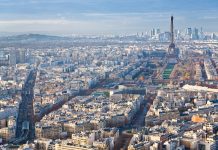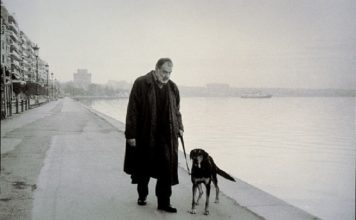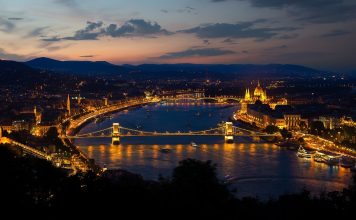Zaragoza is a city in the autonomous community of Aragon, Spain. It is the capital and most populated municipality of the province of Zaragoza. Zaragoza is famous for its rich historical and cultural heritage, as well as its natural beauty and gastronomy.
What is Zaragoza Known For?
Zaragoza has over 2,000 years of history, and has been been ruled by the Romans, the Moors and the Christian kings, each one leaving their mark upon the city. Zaragoza has two majestic cathedrals, a fortified Islamic palace in the city centre, monumental remains of the Roman Caesar Augusta, Renaissance-style palace houses, unique treasures of the work of Francisco de Goya, emblems of modern architecture and one of the most diverse and vibrant festivals in Spain.
Zaragoza is also famous for its location by the Ebro river and its tributaries, the Huerva and the Gállego, which provide scenic views and recreational opportunities. Zaragoza is surrounded by natural parks, such as the Moncayo, the Sierra de Guara and the Ordesa y Monte Perdido, where visitors can enjoy hiking, biking, skiing and other outdoor activities.
Zaragoza is also famous for its cuisine, which reflects its multicultural past and its agricultural wealth. Zaragoza offers a variety of dishes, such as migas (fried bread crumbs with garlic and pork), ternasco (roasted lamb), borrajas (borage with potatoes and almonds), adoquines (caramel candies) and frutas de Aragón (candied fruits covered with chocolate). Zaragoza is also known for its wines, especially those from the Cariñena and Somontano denominations of origin.
Famous Drinks in Zaragoza
One of the most famous drinks in Zaragoza is the pitarra wine, a traditional homemade wine made from grapes grown in the region. Pitarra wine is usually sweet and strong, and can be red, white or rosé. It is often served in clay jugs or bottles with a cork stopper. Pitarra wine is typically consumed during festivals, celebrations and family gatherings.
Another famous drink in Zaragoza is the licor de bellota, a liqueur made from acorns. Acorns are abundant in Aragon, as they are the main food source for the Iberian pigs that produce the famous jamón ibérico (Iberian ham). Licor de bellota is a smooth and aromatic drink that can be enjoyed as an aperitif or a digestif.
Zaragoza also has a variety of beers to offer, both local and international. Some of the local breweries are Ambar, La Zaragozana and Ordio Minero, which produce craft beers with different styles and flavors. Some of the international beers that can be found in Zaragoza are Guinness, Paulaner and Heineken.
Famous Sports in Zaragoza
One of the most popular sports in Zaragoza is football (soccer), as in most parts of Spain. The city has several football teams, such as Real Zaragoza, which plays in the second division of the Spanish league, and SD Ebro, which plays in the third division. Football fans in Zaragoza also support Real Madrid or Barcelona, the two biggest clubs in Spain.
Another sport that has a long tradition in Zaragoza is basketball. The city has a professional basketball team called Casademont Zaragoza, which plays in the first division of the Spanish league and competes in European tournaments. Basketball is also popular among young people, who play it in schools and clubs.
Zaragoza also hosts several sporting events throughout the year, such as marathons, triathlons, cycling races and golf tournaments. Some of these events are:
- The CaixaBank 10k Zaragoza: A 10-kilometer race that takes place in October along the banks of the Ebro river.
- The Carrera de la Mujer: A women-only race that takes place in October to raise awareness and funds for breast cancer research.
- The Ambar Ebrovida: A 20-kilometer race that takes place in November along the Camino de la Alfranca and the banks of the Gállego river.
- The Open de España de Golf: A golf tournament that takes place in April at the Real Club de Golf de la Peñaza.
Famous Streets in Zaragoza
One of the most famous streets in Zaragoza is Calle Alfonso I, which connects Plaza del Pilar with Plaza España. It is a pedestrian street that offers a variety of shops, cafes, restaurants and bars. It is also where some of the main events of the Fiestas del Pilar take place, such as concerts, parades and fireworks.
Another famous street in Zaragoza is Calle del Coso, which runs parallel to Calle Alfonso I and forms part of the old city wall. It is a wide avenue that has many historical buildings, such as the Palacio de la Diputación, the Teatro Principal and the Iglesia de San Gil. It is also where some of the most important bullfights are held during the Fiestas del Pilar.
A third famous street in Zaragoza is Calle Don Jaime I, which leads to the entrance of the Ciudad Monumental (Monumental City), the historical quarter of Zaragoza. It is a narrow street that has a medieval atmosphere and many shops and restaurants. It is also where some of the most emblematic monuments of Zaragoza are located, such as the Basílica del Pilar, La Seo Cathedral and the Aljafería Palace.
FAQs about Zaragoza
- What is the best time to visit Zaragoza?
The best time to visit Zaragoza depends on your preferences and interests. If you want to enjoy the pleasant weather and avoid the crowds, spring (March-May) and autumn (September-November) are ideal seasons. If you want to experience the festive atmosphere and cultural events, summer (June-August) and winter (December-February) are also good options.
- How to get to Zaragoza?
Zaragoza is well connected by road, rail and air. You can drive to Zaragoza from Madrid (300 km), Barcelona (300 km) or Valencia (350 km) via highways A-2 or A-23. You can also take a train from Madrid (1.5 hours), Barcelona (1.5 hours) or Valencia (3 hours) via Renfe or AVE. You can also fly to Zaragoza Airport (10 km) or Madrid-Barajas Airport (330 km) and then take a bus or a taxi to Zaragoza.
- What are some of the must-see attractions in Zaragoza?
Some of the must-see attractions in Zaragoza are:
- The Basílica del Pilar: A baroque church that houses the image of the Virgin Mary that appeared to Saint James in 40 AD. It is one of the most important pilgrimage sites in Spain and has a spectacular dome and frescoes by Goya.
- La Seo Cathedral: A Gothic cathedral that was built on the site of a Roman temple and a mosque. It has a magnificent Mudejar tower and a tapestry museum.
- The Aljafería Palace: A fortified palace that was built by the Moors in the 11th century and later used by the Christian kings. It has a beautiful courtyard, a mosque and a throne room.
- The Roman Theatre: A theatre that was built in the 1st century AD and could seat up to 6,000 spectators. It was rediscovered in 1972 and restored as a cultural venue.
- The Goya Museum: A museum that displays paintings, engravings and drawings by Francisco de Goya, one of the most influential artists in history. It also has works by other Aragonese artists.
See more Famous Places in Spain:
- What is Seville Famous For?
- What is Cadiz Famous For?
- What is Huelva Famous For?
- What is Caceres Famous For?
- What is Granada Famous For?
- What is Madrid Famous For?
- What is Barcelona Famous For?
- What is Valencia Famous For?
- What is Almeria Famous For?
- What is San Sebastian Famous For?
- What is Santanter Famous For?
- What is Salamanca Famous For?
- What is Oviedo Famous For?
- What is Valladolid Famous For?
- What is Cordoba Famous For?
- What is Alicante Famous For?
- What is Bilbao Famous For?
- What is Palma Famous For?
- What is Murcia Famous For?
- What is Zaragoza Famous For?














